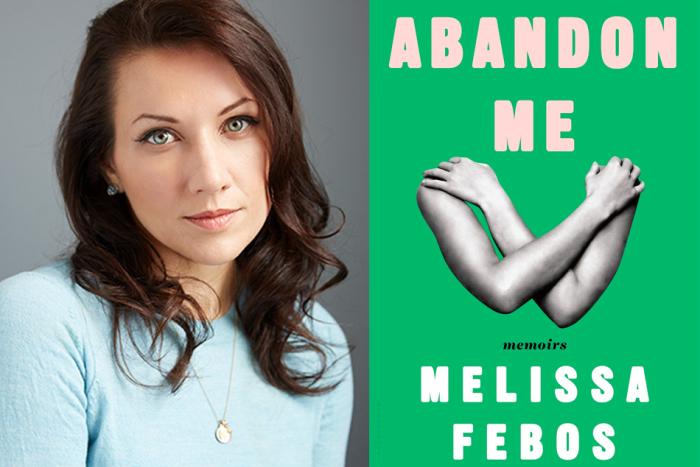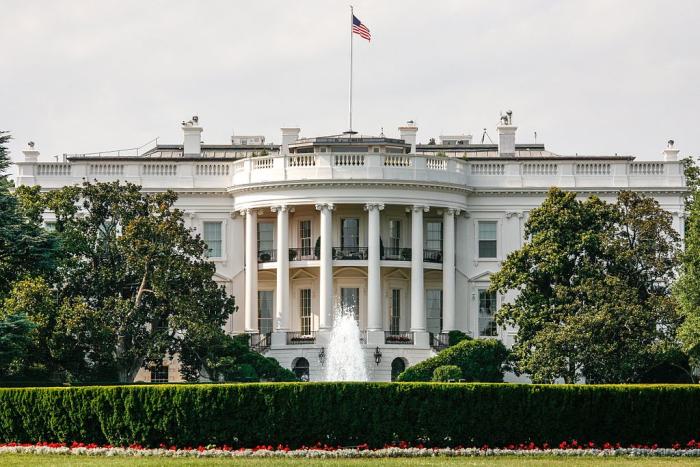What were we obsessed with, invested in and plagued by in 2017? Hazlitt’s writers reflect on the issues, big and small.
The first time I saw the rubber duck on Toronto’s waterfront I felt like I was living in a year-long episode of MTV’s My Sweet Sixteen. It was six stories tall and cost the country $200,000—which, realistically, was a drop in the half-a-billion-dollar bucket Canada set aside to celebrate its 150th birthday. As an Indigenous woman, I must admit the whole thing was surreal. Not six months before, less than a month before Canada 150 started, Prime Minister Justin Trudeau gave an impassioned speech to the Assembly of First Nations about the tenuous relationship between Indigenous people and the Canadian government. He used the word “reconciliation” fourteen times.
As I watched the rubber duck bob on the edge of Lake Ontario, I couldn’t help but think of a young Indigenous girl in Alberta who needed $6,000 worth of braces to correct her painful malfunctioning jaw. Her request was denied by Health Canada, the federal department tasked with determining dental care for Status Indians. Apparently, the girl’s jaw condition was so unusual it did not fall into the four categories of dental issues they fund. The girl’s mother, Stacey Shiner, filed a lawsuit against the government in 2016, calling Health Canada’s decision “unreasonable.” The government had spent over $32,832 fighting Shiner by January. By September, that number had jumped to $110,000—enough to cover the cost for eighteen Indigenous kids’ braces. Or, I guess, enough for a little more than half of that giant rubber duck. Was this the “reconciliation” Trudeau had in mind? Fighting children in court while his government bankrolled massive reproductions of their bathtub toys? I didn’t bother trying to hide my disgust.
Throughout the year, the (mis)use of the word “reconciliation” got increasingly worse, making my teeth clench and my stomach twist. For example, the Canadian government appointed non-Indigenous musician Gord Downie to the Order of Canada for leadership in Indigenous issues. His citation said that he was being honoured for “promoting dialogue, raising awareness of the history of residential schools and moving the country along the path to reconciliation.” At the same ceremony, Meritorious Service Crosses were given to J. Wilton Littlechild, the Honourable Justice Murray Sinclair and Marie Wilson, who all served on the Truth and Reconciliation Commission—and who had for six years done the difficult work of gaining the trust of residential school survivors, gathering their stories and making them feel safe and heard, all before writing a 544-page report and making 94 thoughtful recommendations on how Canada should move forward as a country. They, however, went unmentioned by nearly every media outlet who reported on the story—as did the actual residential school survivors who were brave enough to come forward and tell their stories. Two Ontario teachers were so inspired by Downie they even came up with a viral hashtag celebrating him: #teachlikeGord. These teachers mentioned Chanie Wenjack, the boy who died running away from residential school and inspired Downie’s Secret Path project. But they didn’t mention the Chanie Wenjacks of today—kids like Tina Fontaine, who got taken into child and family services’ custody, ran away and was found dead in the Red River when it was too late.
No, Canadians don’t want to focus on Indigenous people. They want to focus on Gord Downie. He taught them about residential schools—two years after the TRC Report was released. He showed them what reconciliation was—twenty years after the Royal Commission on Aboriginal People laid out a 1,000-plus-page map. For these Canadians, Indigenous history and Indigenous pain only mattered because a famous white man suddenly told them it should.
My eyes just kept rolling. I couldn’t stop sighing. I must have looked like I was possessed. And now, the year drawing to a close, I’ve heard the term bandied about in so many ridiculous contexts, for so many ridiculous reasons, from so many ridiculous people, I’m not sure it means anything at all anymore—I’m lucky if my eyes even glaze over at this point.
Leon James, a professor of psychology at the University of Hawaii, calls this phenomenon “semantic satiation.” He wrote his doctoral dissertation on the subject while at Montreal’s McGill University. “When a brain cell fires, it takes more energy to fire the second time, and still more the third time, and finally the fourth time it won’t even respond unless you wait a few seconds,” James told Mental Floss in 2015. “[If] you repeat a word, the meaning in the word keeps being repeated, and then it becomes refractory, or more resistant to being elicited again and again.”
Sometimes I wonder if that’s why so many non-Indigenous Canadians have failed to acknowledge our peoples’ pain until recently. Have they just heard that we’re “dying savages,” believed that we’re “dying savages” and repeated that we’re “dying savages” so many times that true, painful tales of our struggles cannot elicit an emotional response? Does semantic satiation explain why members of the Canadian government can regularly throw around the word “reconciliation” while simultaneously refusing to end gender discrimination in the Indian Act, which penalizes Indigenous women for marrying non-Indigenous men by taking away their Indian status? While running a failing inquiry into the reasons why over 1,200 Indigenous women and girls have been murdered or gone missing in Canada—an inquiry that has somehow driven away numerous families, leaders, experts and activists that have devoted their lives to this cause? While using poverty and poor housing as an excuse to steal our children and place them in child welfare at numbers that now exceed the amount of children in residential schools when they were at their height?
It is important to acknowledge the Truth and Reconciliation Commission’s original definition of the term: “To the Commission, ‘reconciliation’ is about establishing and maintaining a mutually respectful relationship between Aboriginal and non-Aboriginal peoples in this country. In order for that to happen, there has to be awareness of the past, acknowledgement of the harm that has been inflicted, atonement for the causes, and action to change behaviour” (emphasis added). What the current Liberal government of Canada has been offering as “reconciliation,” some of which I’ve outlined above, has not been mutually respectful. It has not indicated any change in the pattern of colonial, paternalistic behaviour. Instead, it’s been photo-op reconciliation: highly staged moments that look good on camera and, most importantly, make non-Indigenous Canadians feel better about horrors that have been committed against Indigenous peoples in the past, while rarely acknowledging how those horrors continue in the present. It’s this ahistorical positioning that allows people to rationalize the status quo, saying things like, “I didn’t do that, so I’m not going to apologize for it,” or, “It happened years ago. You need to get over it already.”
Attitudes of the past directly inform the attitudes of the present. Sometimes acknowledging the mistakes of the past causes real change, and sometimes it doesn’t cause real change at all, instead just encouraging the same problematic attitudes to morph into a more covert, easily digestible version suitable for modern-day tastes. While Stephen Harper was prime minister, for example, there was a public apology for residential schools. However, little has been done to address their modern-day equivalent: child and family services using systemic poverty as an excuse to abduct Indigenous children, who now make up almost 50 percent of the kids in foster care. There have been emotional press conferences announcing the long-overdue, aforementioned Missing and Murdered Indigenous Women and Girls inquiry, but still no acknowledgement by the federal government that, as of 2015, Winnipeg police said four out of five missing persons reports they received each month involved kids in the care of Manitoba Child and Family Services—71 percent of them being girls.
What’s more, the current Liberal government of Canada has actively encouraged the problem by refusing to adequately fund and provide First Nations child-welfare on reserves, denying them the same funding and access to public services offered to non-Indigenous children off-reserve. In 2007, Cindy Blackstock, executive director of the First Nations Child and Family Caring Society of Canada, along with the Assembly of First Nations, filed a human rights complaint against the Canadian government, arguing Canada’s purposeful, insufficient funding and lack of family support caused more Indigenous kids to be put into the child welfare system. In January this year, the Canadian Human Rights Tribunal agreed: Canada was intentionally discriminating against Indigenous children. They even compared modern on-reserve child welfare to the residential school system. So far, despite emotional declarations for “reconciliation,” and despite three non-compliance orders by the Canadian Human Rights Tribunal, the Liberal government has made no motion to change this.
Considering how little the federal government cares for Indigenous children, it should be no surprise that they care even less for Indigenous adults. Once our kids age out of the child welfare system, they have the criminal justice system to look forward to, which incarcerates Indigenous offenders at a rate that astounds: Indigenous inmates account for 22.8 percent of the federally-incarcerated population despite making up 4.3 percent of the Canadian population, and are ten times more likely to be imprisoned than non-Indigenous people. The rates spike in different parts of the country: As of 1999, if you were Indigenous and lived in Saskatoon, you would be 33 times more likely to be imprisoned. Once inside prison, the experiences of Indigenous inmates like Adam Capay, a 24-year-old Anishinaabe man, paint a grim picture. Capay faced solitary confinement for 1,636 consecutive days, the longest in Ontario’s history, and, as of April this year, had not received a trial in the five years he’d been imprisoned.
And, of course, there’s the way that land defenders are criminalized and jailed under Canadian laws. In May, Beatrice Hunter, an Inuk grandmother, was arrested for protesting Nalcor’s Megadam Muskrat Falls project, which Inuit say is poisoning their food webs and threatening their way of life, as well as potentially putting Newfoundland and Labrador into deep debt. When she refused a court order to stay one kilometer away from the site, essentially prohibiting her from protesting anymore, she was sent to a men’s prison for ten days; the women’s prison was too crowded to admit her.
A month later, nine Bawaating Water Protectors were arrested for attempting to put up a teepee on Parliament Hill “without a permit.” Mounties initially erected a barricade and physically prevented the teepee from being erected, which the protectors intended to use to fast and pray in. The next day, to the delight of the media, Prime Minister Justin Trudeau visited the assembled reoccupation teepee—decked out in a Canada 150 jean jacket, no less. Afterwards, he tweeted, “Our government is committed & dedicated to moving forward on reconciliation - myself & everyone in cabinet.”
And this is to say nothing of Senator Lynn Beyak’s series of racist, offensive comments gaslighting residential school survivors and calling the disgusting, destructive White Paper “ahead of its time,” the “Appropriation Prize” scandal, or the recent Supreme Court decision to allow a ski resort to be built on land the Ktunaxa Nation has argued would affect a grizzly bear habitat and drive away the Great Bear Spirit. I won’t get into the horrific murder of Barbara Kentner, at whom a young, white man in Thunder Bay threw a trailer hitch from a passing truck, or the numerous other Indigenous people in that city who have been found dead in its waterways. I won’t detail the photo-op reconciliation of the Gord Downie & Chanie Wenjack Fund’s Legacy Room project, which, for an annual donation, creates “a space within an organization dedicated to reconciliation [which] showcases an organization’s commitment to our reconciliation journey.” I won’t enumerate all the times Indigenous people who have questioned the way this activity helps establish mutual respect and encourages colonial behaviour to change, or stood against cultural appropriation, or pointed out the racism that targets ethical Inuit seal hunting while remaining silent on factory-farmed chicken or beef, have been targeted and harassed by non-Indigenous Canadians.
At this point, it’s clear that “reconciliation” is designed to help Canadians feel better about their past, not help Indigenous peoples set a healthy course for our future. Anishinaabe mother and professor Andrea Landry put it best when she wrote, “This reconciliation is for the colonizer.” An unfortunate casualty of photo op co-opting and semantic satiation, "reconciliation" needs to be put aside and replaced with what really matters: restoration. Restoration of Indigenous languages, cultures, nations, land. That would make a real difference. That would embody mutual respect and a change in behaviour.






